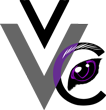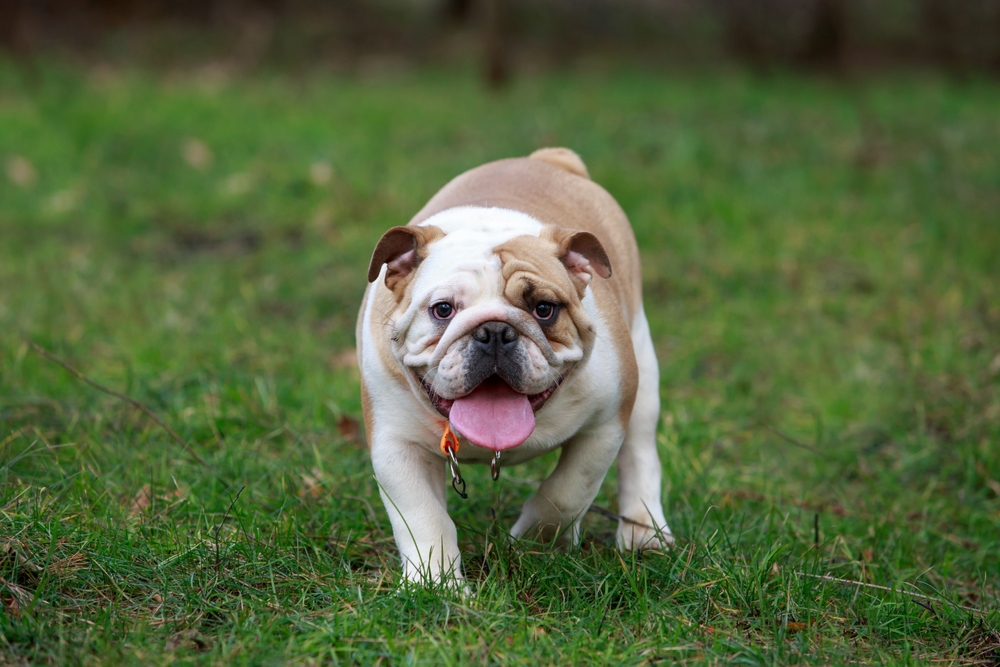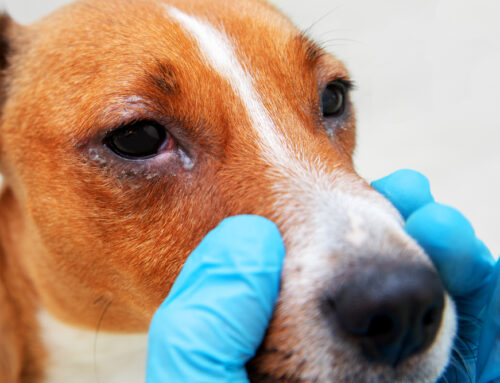The bulldog’s distinctive wrinkled face attracts many pet owners, but their unique anatomy makes them susceptible to various health issues, including certain genetic eye conditions that can affect their vision and overall quality of life. Our Veterinary Vision Center team explains what you need to know about genetic eye conditions in bulldogs.
Distichiasis in bulldogs
Distichiasis occurs when extra eyelashes, called distichia, grow from the meibomian glands, which are oil glands along the eyelid edges. These abnormal eyelashes can rub against the cornea, leading to irritation, discomfort, and potentially corneal trauma. Signs include eye redness and irritation, excessive tearing, squinting or blinking excessively, and a mucus-like ocular discharge. Left untreated, corneal abrasions or ulcerations can occur.
Our team will diagnose distichiasis by visualizing abnormal eyelash growth and using a fluorescein stain test to check for corneal erosions. Treatment options for distichiasis include:
- Manual removal — In mild cases, the extra eyelashes can be manually plucked by a veterinary professional using forceps, which provides temporary relief. However, the eyelashes typically grow back.
- Electrolysis — With electrolysis, an electric current destroys the hair follicles, preventing regrowth of the problematic eyelashes. This method is more permanent, but may require multiple sessions.
- Cryotherapy — Cryotherapy uses extreme cold to freeze and destroy the hair follicles to remove the distichia permanently.
- Surgery — In severe cases, surgery may be necessary to remove the affected hair follicles or part of the eyelid margin to prevent regrowth and corneal irritation.
Entropion in bulldogs
Entropion is a condition where the eyelids roll inward, and the eyelashes and facial hair rub against, irritate, and damage the corneal surface. Entropion can be a primary condition, which is typical in bulldogs, or secondary to issues such as eyelid scarring, nerve damage, eye injuries, and dermatologic conditions. Signs include excessive tearing, squinting or blinking frequently, and eye redness and inflammation.
Entropion is diagnosed by evaluating the eyes for inward rolling eyelids. Most puppies with entropion require reconstructive eyelid surgery to correct the problem but have to wait for the procedure until they are close to full adult size. Temporary relief until surgery can be performed includes eyelid tacking and eyelid filler injections. Once the puppy is old enough, surgery involves removing excess skin and tightening the eyelids to prevent the inward roll. In some cases, the eyelid openings may also need to be narrowed.
Keratoconjunctivitis sicca in bulldogs
Keratoconjunctivitis sicca (KCS), also known as dry eye, occurs when an inadequate tear film cannot lubricate the eye properly. The most common cause is an immune-mediated attack on the tear-producing gland tissue. Signs include painful, red, irritated eyes, often with a thick, yellow ocular discharge. KCS frequently leads to corneal irritation and conjunctivitis if not properly managed.
KCS is diagnosed by testing tear production using the Schirmer tear test. This involves placing a special wicking paper under your dog’s eyelid and measuring the tear film production in one minute. Our team will also stain your bully’s cornea to check for abrasions or ulcerations. KCS treatment often involves a multimodal approach, which may include:
- Tear stimulants — Our team may prescribe medications to stimulate tear production and suppress the immune response attacking the tear glands.
- Artificial tears — Frequent application of artificial tear solutions or ointments helps keep the eyes moist and alleviates discomfort.
- Anti-inflammatory medications — Corticosteroids or non-steroidal anti-inflammatory drugs (NSAIDs) may reduce inflammation and improve comfort.
- Antibiotics — Antibiotic eye drops or ointments may be necessary, especially if a corneal abrasion or ulceration is present.
- Hygiene — Regular eye cleaning is important to keep the eye discharge-free and to prevent irritation.
- Surgery — In severe cases, a procedure called parotid duct transposition, which redirects the salivary duct to moisten the eyes, can be performed.
Genetic eye conditions in bulldogs can significantly impact their quality of life if left untreated. By understanding the common eye issues affecting bulldogs and taking proactive steps to manage their eye health, you can ensure your beloved bully leads a happy, healthy life. Contact our Veterinary Vision Center team if you are concerned about your bulldog’s eye health.







Leave A Comment